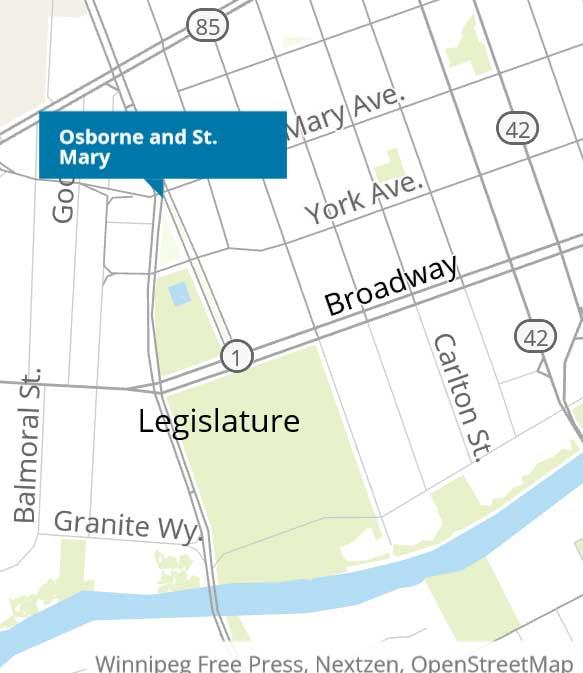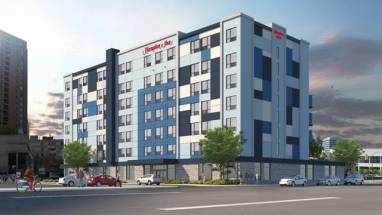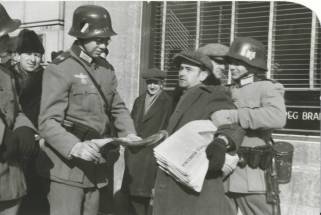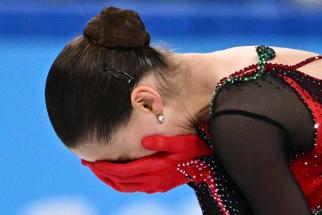Red light, green light, no oversight Winnipeg’s public works department wastes millions of tax dollars on unnecessary streets and transportation projects, independent research reveals
Read this article for free:
or
Already have an account? Log in here »
To continue reading, please subscribe:
Monthly Digital Subscription
$0 for the first 4 weeks*
- Enjoy unlimited reading on winnipegfreepress.com
- Read the E-Edition, our digital replica newspaper
- Access News Break, our award-winning app
- Play interactive puzzles
*No charge for 4 weeks then price increases to the regular rate of $19.00 plus GST every four weeks. Offer available to new and qualified returning subscribers only. Cancel any time.
Monthly Digital Subscription
$4.75/week*
- Enjoy unlimited reading on winnipegfreepress.com
- Read the E-Edition, our digital replica newspaper
- Access News Break, our award-winning app
- Play interactive puzzles
*Billed as $19 plus GST every four weeks. Cancel any time.
To continue reading, please subscribe:
Add Free Press access to your Brandon Sun subscription for only an additional
$1 for the first 4 weeks*
*Your next subscription payment will increase by $1.00 and you will be charged $16.99 plus GST for four weeks. After four weeks, your payment will increase to $23.99 plus GST every four weeks.
Read unlimited articles for free today:
or
Already have an account? Log in here »
Hey there, time traveller!
This article was published 18/02/2022 (1390 days ago), so information in it may no longer be current.
Everyone knows the joke: Winnipeg has two seasons, winter and construction.
It’s as likely to produce a groan as a laugh, but the punchline contains an obvious truth: in this city, people are used to impatiently drumming their fingers on the steering wheel as traffic slows to a stop and work crews labour under the sun.
If a sharp-eyed motorist was stopped at the southwest corner of Osborne Street and St. Mary Avenue in the summer of 2013, they might have noticed some odd construction projects underway.
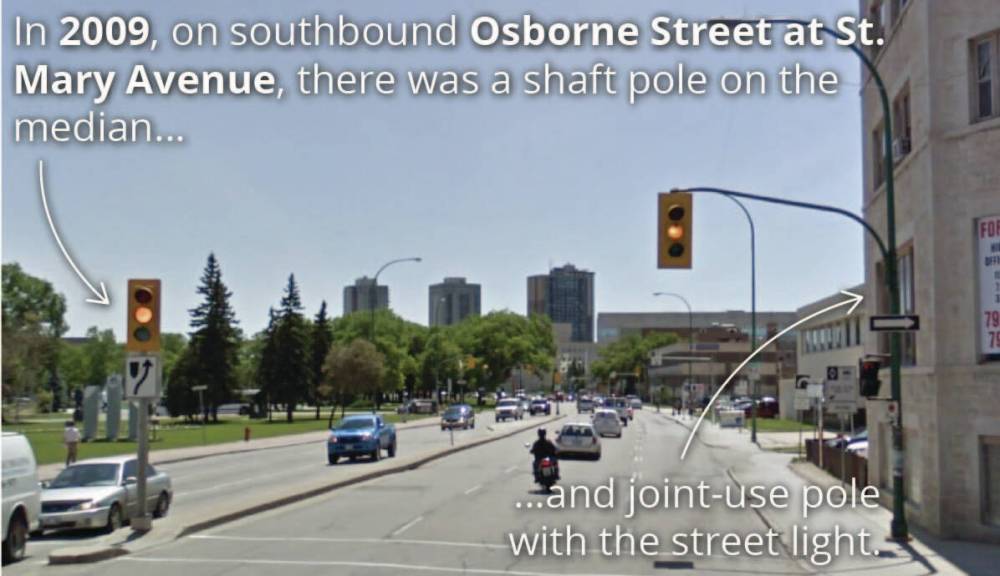
On the south median, facing vehicles driving towards the Manitoba Legislative Building, stood a short pole with a traffic light on top.
Work crews were there to add a pedestrian “tactile” — a yellow textured surface that helps visually impaired people navigate the streets — on a nearby crosswalk.
But they did more than that. They dug up the entirety of the crosswalk, moving the traffic pole from the south side to the north.
This was a considerable undertaking, which required tearing up concrete, digging into the ground, pouring fresh cement, installing new equipment and rewiring below the street. They also swapped out the traffic lights.
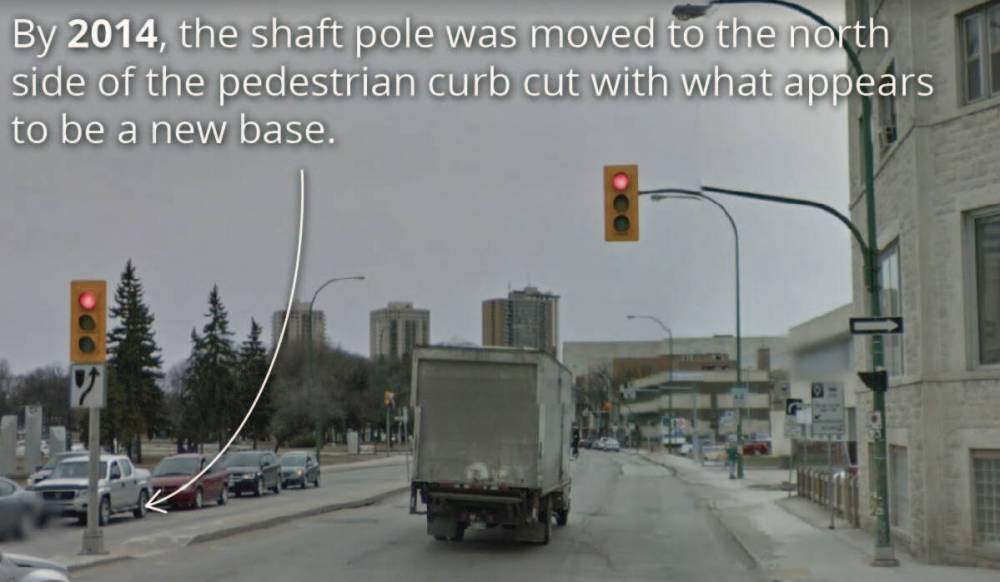
Traffic-control devices, unless damaged or defective, can last many years, even decades — but these wouldn’t last that long.
In the summer of 2016, work crews were back for a street renewal, which meant the transportation division of the public works department was approved to do incidental work staff deemed necessary.
The pole on the south median — which had been in place for roughly three years — was replaced with what is known as a “davit” pole. In traffic parlance, that’s the structure that extends up from the pavement and curves out, positioning the traffic light above the road.
They did the same thing at the southwest corner of the intersection, replacing a “joint-use” pole, which has a traffic arm bolted to the side of a street light pole to save resources, with a new one.
Rather than install the new joint-use pole on the existing base, they chose to move it a metre or two to the north — tearing up the concrete, digging into the ground, pouring fresh cement, replacing the equipment and rewiring it below the street.
They also swapped out the traffic lights they’d installed in 2013 for new ones.

Three years later they were back.
In the summer of 2019, work crews split the joint-use pole at the southwest corner of the intersection, requiring a new cement base for a new traffic pole to be poured a metre or two to the south, back in its original location.
A separate pole remains with just the street light, which would have been capable of holding all the needed traffic-control equipment — as it had for years.
Meanwhile, on the south median, the davit pole from three years prior was replaced with a cantilever. While the davit arm curves out over the street, the cantilever extends straight out; the only difference between the two is cosmetic.
To this day, the city continues to use both models.
Once again, the concrete was torn up, a new base was poured, new equipment was installed, and rewiring was done under the street. And, as in 2013 and in 2016, the traffic lights were replaced.
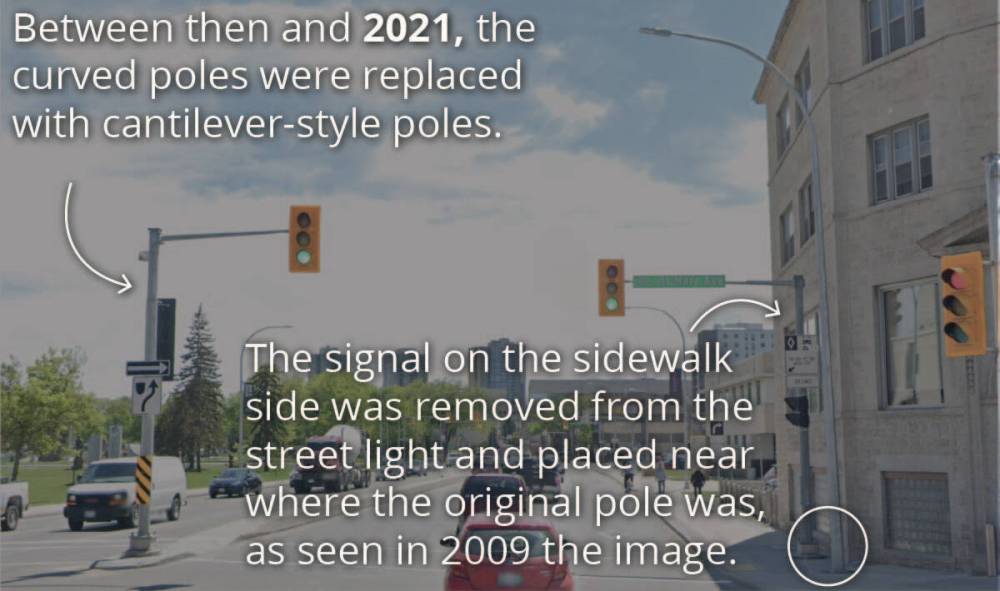
In the span of six years, the pole on the south median was moved or replaced three times. In 2016, the joint-use pole on the southwest corner was moved and replaced, only to be split, moved back again and replaced once more in 2019.
And each time work crews arrived, they swapped out the traffic lights.
That’s just one corner of the intersection; at the others, a similar campaign of projects with little practical justification was carried out to replace traffic-control equipment designed to last decades after only a fraction of that time.
Osborne Street and St. Mary Avenue, in the heart of the city, is no anomaly.
It’s the tip of the iceberg.
It’s a single example of what independent researcher Christian Sweryda, who has been studying traffic-related issues in Winnipeg for more than a decade, calls a massive campaign of frivolous construction projects carried out by the public works department spanning the entire city and dating back at least a dozen years, to the tune of millions of dollars.
“This has been happening right under our noses,” Sweryda says.

The Free Press spent eight weeks reviewing Sweryda’s work, discussing the findings with academics and local politicians, and reviewing his research methods with experts, including engineering professionals and a lawyer who specializes in anti-corruption.
Interview subjects likened the findings to a smoking gun, saying the transportation division of the city’s public works department flouts widely accepted engineering standards and seems to have little justification for work patterns that are either incompetent or corrupt.
What follows is Part 1 of the Free Press investigative series Red Light, Green Light, No Oversight.
•••
In 2021, Christian Sweryda hit the road — literally and virtually — with a plan to follow the money.
After years of research, he has developed deep subject-matter expertise on engineering standards (he can cite page and verse from the Manual of Uniform Traffic Control Devices for Canada) and the finer points of Manitoba’s Highway Traffic Act.
Although he lacks formal training — he works for the Winnipeg School Division and is currently enrolled in law school — his research has been cited in court cases and has led to public-policy changes at the municipal level.
Professors in multiple departments at the University of Manitoba and the University of Winnipeg regularly invite him to lecture students on traffic issues.
Using Google Street View, which has been photographing Winnipeg since 2007, Sweryda has catalogued and tracked the changes to intersections across the city as far back as the images go.
To date, he’s completed an in-depth analysis of 513 of the city’s 681 traffic light-controlled intersections — roughly 75 per cent — including everything north of the CNR main line.

The research shows a systematic pattern of inefficient and unnecessary work, including infrastructure rebuilds without apparent justification, traffic-control devices routinely swapped out before end of life and traffic-light poles repeatedly changed and moved marginal distances.
“I’m still in disbelief, Sweryda says. “The scope of it… (it’s) so bad that nobody believes it because you sound crazy when you try to explain it.
“It was shocking. But it was also addictive…. It became a question of, ‘What will I find at the next intersection?’ It was like pulling the handle of a slot machine.”
The underlying problem is the City of Winnipeg lacks standardization for traffic-control infrastructure, design and materials. Intentional or not, it has resulted in a staggering campaign of waste.
The lack of standardization was confirmed by David Patman, the manager of transportation for the public works department, in an April 2021 email to Sweryda obtained by the Free Press.
“The city’s assets and network has been permitted over several decades to become an inventory that lacks documentation, and is inconsistent. It has been city practice to allow for inconsistency throughout the transportation infrastructure,” Patman wrote.
“You make some good points about consistency and wasted resources.”
So there are different intersections designed in different ways with different materials. But there are also different designs and different materials jumbled together at a single intersection.
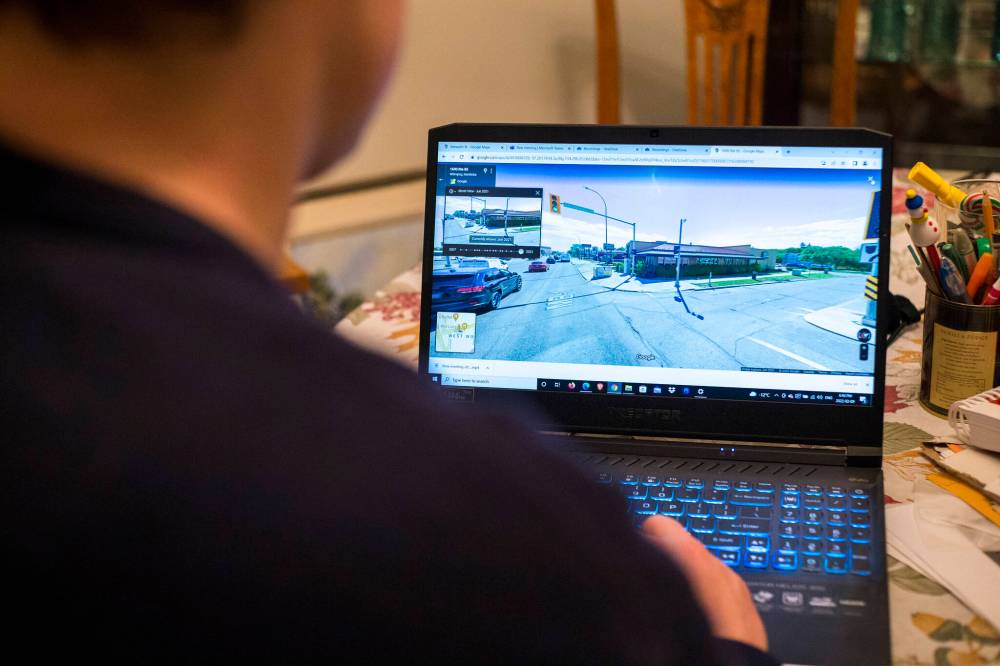
The Free Press offered to walk the City of Winnipeg through Sweryda’s findings if it made Patman and director of public works Jim Berezowsky available for an interview.
The city declined. Instead, it provided the Free Press with a written statement extolling the professionalism of its traffic engineers, and noted a process of updating its transportation design manual and its design standards for traffic-signal infrastructure is underway.
THE CITY RESPONSE
”City of Winnipeg engineers recommend solutions and make decisions (related to signals, traffic, and otherwise) with diligence, care, and consideration of both best practices and the context of the location where they are to be applied.
“As a department, we have a duty to conduct ourselves in a way that serves and protects the interests of taxpaying Winnipeggers. As registered professionals, our engineers have a duty to uphold professional standards and adhere to national and local practice guides, while also designing individual solutions to individual scenarios, locations, and challenges.
“There could be a multitude of reasons why infrastructure at one intersection differs from another that may appear on the surface to be similar…
“City of Winnipeg engineers recommend solutions and make decisions (related to signals, traffic, and otherwise) with diligence, care, and consideration of both best practices and the context of the location where they are to be applied.
“As a department, we have a duty to conduct ourselves in a way that serves and protects the interests of taxpaying Winnipeggers. As registered professionals, our engineers have a duty to uphold professional standards and adhere to national and local practice guides, while also designing individual solutions to individual scenarios, locations, and challenges.
“There could be a multitude of reasons why infrastructure at one intersection differs from another that may appear on the surface to be similar.
“For example: our department must repair and replace signals frequently due to damage, and sometimes have to replace said infrastructure with whatever is on-hand at that time in order to get an intersection back to safe operations as quickly as possible.
“There are also a great deal of individual considerations that go into decisions at a given location versus those of another – including intersection geometry, unique conditions (such as wind gusts, potential for glare, etc), and availability of equipment.
“That said, we update standards regularly to ensure currency and alignment with other jurisdictions, and are right now in the process completing both the next update of our transportation design standards manual and an updated set of design standards specifically for traffic signal infrastructure.”
Sweryda’s research suggests staff has engaged in a frivolous work campaign by piggybacking off annual street renewals, as well as rapid transit and active-transportation projects — a sleight of hand performed in front of Winnipeggers each and every summer.
He and others believe the only way to tally the costs is a forensic audit, which can be the basis for a criminal investigation, if needed.
The audit appears to be coming.
In late 2021, Sweryda took his findings to Coun. Matt Allard, who chairs the public works committee. The two men have collaborated on traffic issues in the past, and Allard speaks highly of Sweryda’s abilities as a researcher.
Shortly after reviewing Sweryda’s findings, Allard (St. Boniface) moved a motion at the Riel Community Committee ordering the department to draw up plans for standardization and report back six months later.
“It appears that this issue has led to inefficient use of resources over the years and on an ongoing basis, with ad hoc changes to traffic control infrastructure taking place repeatedly,” Allard wrote on his Facebook page.
“This week, I moved a motion… asking the public service to report back with proper standards to ensure responsible use of tax dollars and the highest standard of safety available under national guidelines.”
But he didn’t stop there. Allard was so concerned by Sweryda’s findings that he immediately connected him with city auditor Bryan Mansky. It was the first time since being elected to city council in 2014 that Allard proactively reached out to the office.
“I’m definitely concerned…. You have to wonder how this could possibly be rationalized? How could this have possibly happened?” Allard tells the Free Press.
“If there are materials being replaced that don’t need to be replaced, why is that happening?… What’s going on here? Why is this work getting done over and over again?”
”If there are materials being replaced that don’t need to be replaced, why is that happening?… What’s going on here? Why is this work getting done over and over again?”–Coun. Matt Allard
To answer those same questions, the Free Press set up a meeting with Sweryda and Yasser Hassan, a professor of transportation engineering at Ottawa’s Carleton University, who chairs the department of civil and environmental engineering.
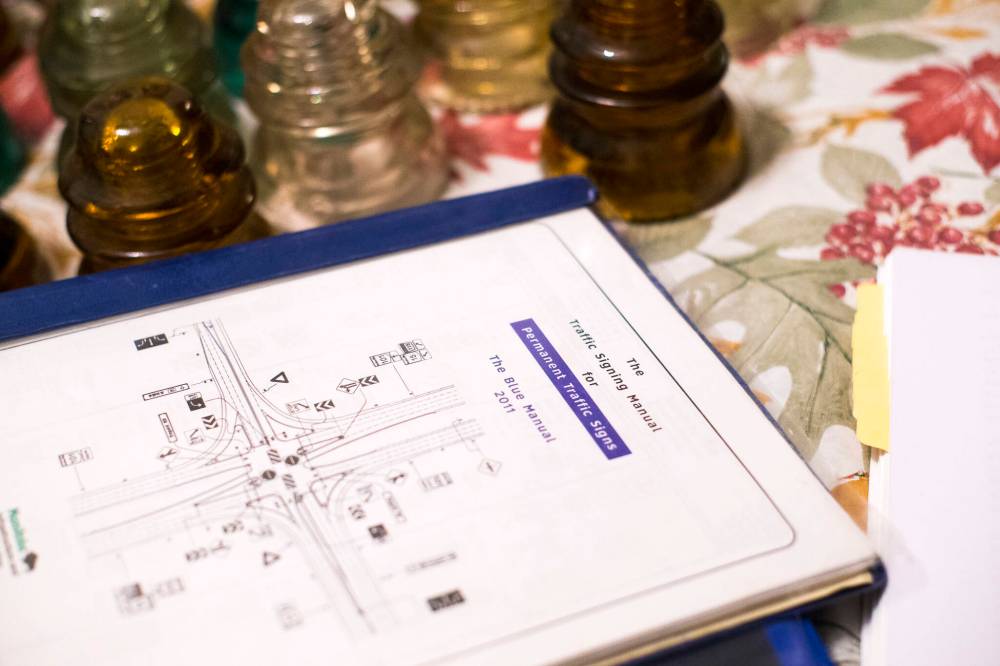
Before emigrating to Canada, Hassan was the person responsible for approving nearly every traffic and road engineering project in Abu Dhabi, capital of the United Arab Emirates.
He came away from the meeting scratching his head, saying that from the outside looking in, he couldn’t make heads or tails of what Winnipeg’s traffic engineers are up to.
“There was a lot I saw that doesn’t make any sense…. They need to have a justification for this. And this justification must be documented. It must show that not only what is being done is to the benefit of the public, but also that it makes sense economically,” Hassan says.
“The onus is on them to show this. If they show it, then we can scrutinize it and see if it holds up…. But if there is no documentation, there is no defence.”
”If there is no documentation, there is no defence.”–Yasser Hassan
Sweryda filed a series of freedom-of-information requests seeking documents and department correspondence that could explain his findings; they turned up little more than blueprints devoid of detailed justification.
In one case, the city said the work in question had been organized by “word of mouth,” so there was no paper trail.
A city hall source with knowledge of department practices — who does not want to be identified — says people there are just as confused.
“I know of no rational explanation for what they are up to,” the source says.
Remember that joke about Winnipeg’s two seasons?
It turns out the joke could be on taxpayers.
Tuesday: Part 2
ryan.thorpe@freepress.mb.ca | Twitter: @rk_thorpe

Ryan Thorpe likes the pace of daily news, the feeling of a broadsheet in his hands and the stress of never-ending deadlines hanging over his head.
Our newsroom depends on a growing audience of readers to power our journalism. If you are not a paid reader, please consider becoming a subscriber.
Our newsroom depends on its audience of readers to power our journalism. Thank you for your support.
History
Updated on Friday, February 18, 2022 7:15 PM CST: tweaks subhead

